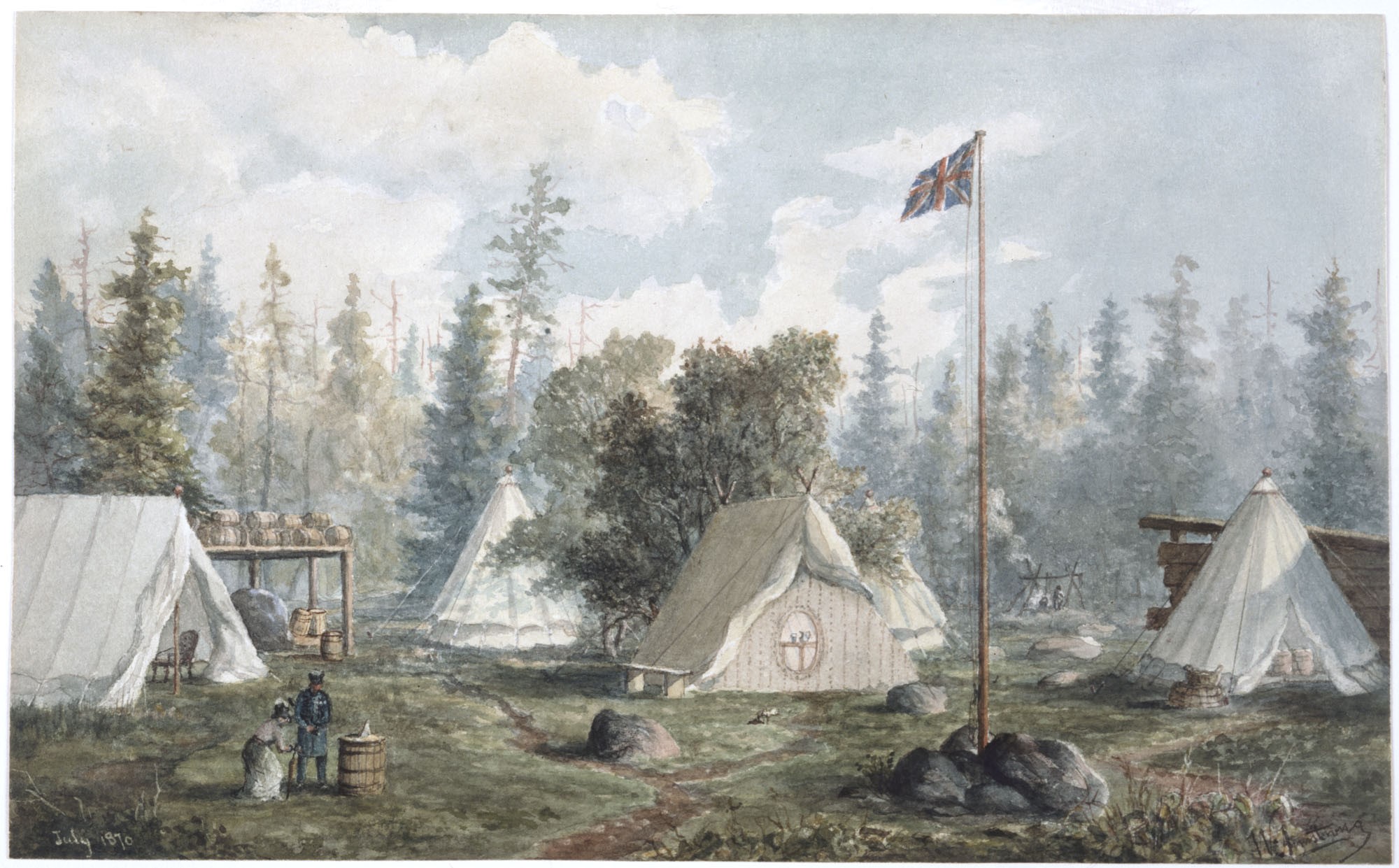Garnet Joseph Wolseley, 1st Viscount Wolseley, KP GCB OM GCMG VD PC, army officer (born 4 June 1833 at Golden Bridge House, County Dublin, Ireland; died 25 March 1913 in Menton, France). Wolseley served with the British army in battles and campaigns across the world and was one of the best-known generals of the Victorian period. He was also a proponent of army reform and modernization. Wolseley was tasked with improving Canadian defences in the 1860s (see also Trent Affair, American Civil War, Fenian Raids) and led the Red River Expedition of 1870. He also recruited a contingent of Canadians for the 1884–85 Nile Expedition.

Military Career
Garnet Joseph Wolseley was the eldest son of MajorGarnet Joseph Wolseley and Frances Anne Smith. His father died when he was only seven, leaving the family of seven children in financial difficulty. Wolseley attended school in Dublin and then worked in a surveyor’s office before joining the British army as an ensign in 1852. He was seriously wounded in the thigh during his service in Burma (1852–53); after recovering, Wolseley was sent to the Crimea. He participated in the siege of Sevastapol [Ukraine] in 1854–55, where he was once again wounded, losing the sight in his right eye. He also served during the Indian Mutiny and was part of the forces that relieved Lucknow in 1857. (See also William Neilson Hall.) In 1860, Wolseley took part in an expedition to China.
Service in Canada
Wolseley was appointed assistant quartermaster-general to the Canadian command in 1861 during the Trent Affair. Tensions were high between Britain and the United States, which was then involved in a civil war. By the time he arrived on 5 January 1862, the immediate crisis had passed, but it was clear that Canadian defenses should be strengthened. (See American Civil War and Canada.)
In 1865, Wolseley commanded a militia training camp at La Prairie, near Montreal, earning the praise of the lieutenant-general commanding in British North America. The following year, he was put in charge of a training and observation camp at Thorold. The Fenian Raids had demonstrated the need for a stronger militia, which had struggled in engagements like the Battle of Ridgeway (June 1866). At the camp in Thorold, militiamen trained with British regulars while defending the Niagara border.
Wolseley sailed to England in April 1867 but returned in September to become deputy quartermaster-general in Canada. In 1870, he commanded the Red River Expedition, leading hundreds of Canadian militia and British regulars more than 1,100 km across rugged terrain. All arrived safely in Upper Fort Garry on 24 August, a testament to Wolseley’s leadership and the skill of the 400 voyageurs employed on the expedition.

Later Career
In October 1870, Wolseley returned to England, where he was appointed assistant adjutant-general at the War Office. He served in West Africa, South Africa and Cyprus in the 1870s. In 1880, Wolseley returned to the War Office as quartermaster-general and in 1882 was appointed adjutant-general. That year, he also led a successful campaign in Egypt. Two years later, he was appointed commanding officer of the Nile Expedition to rescue British General Charles Gordon, the lieutenant governor of Sudan who was besieged at Khartoum, Sudan, by Mahdi forces. Wolseley recruited approximately 390 Canadian boatmen to help transport British troops up the Nile River. The expedition, however, was a failure; Khartoum fell before the British forces arrived.
Wolseley served as an army administrator for the remainder of his career, during which time he continued to promote reform. In 1890, he became commander-in-chief for Ireland and was raised to the Privy Council. In 1895, he became commander-in-chief of the British army during a period of ongoing colonial conflict (see also Canada and the South African War.). He retired in 1900 and died in 1913. Wolseley is buried in the crypt of St. Paul’s Cathedral.
Honours and Awards
- Fifth Class, Legion of Honour, France (1856)
- Fifth Class, Order of the Medjidie, Ottoman Empire (1858)
- Knight Grand Cross of the Order of St Michael and St George, United Kingdom (1874)
- Knight Grand Cross of the Order of the Bath, United Kingdom (1880)
- First Class, Order of Osmanieh, Ottoman Empire (1882)
- Knight of the Order of St Patrick, United Kingdom (1885)
- Privy Council, United Kingdom (1890)
- Member of the Order of Merit, United Kingdom (1902)
- Volunteer Officers’ Decoration, United Kingdom (1903)

 Share on Facebook
Share on Facebook Share on X
Share on X Share by Email
Share by Email Share on Google Classroom
Share on Google Classroom



